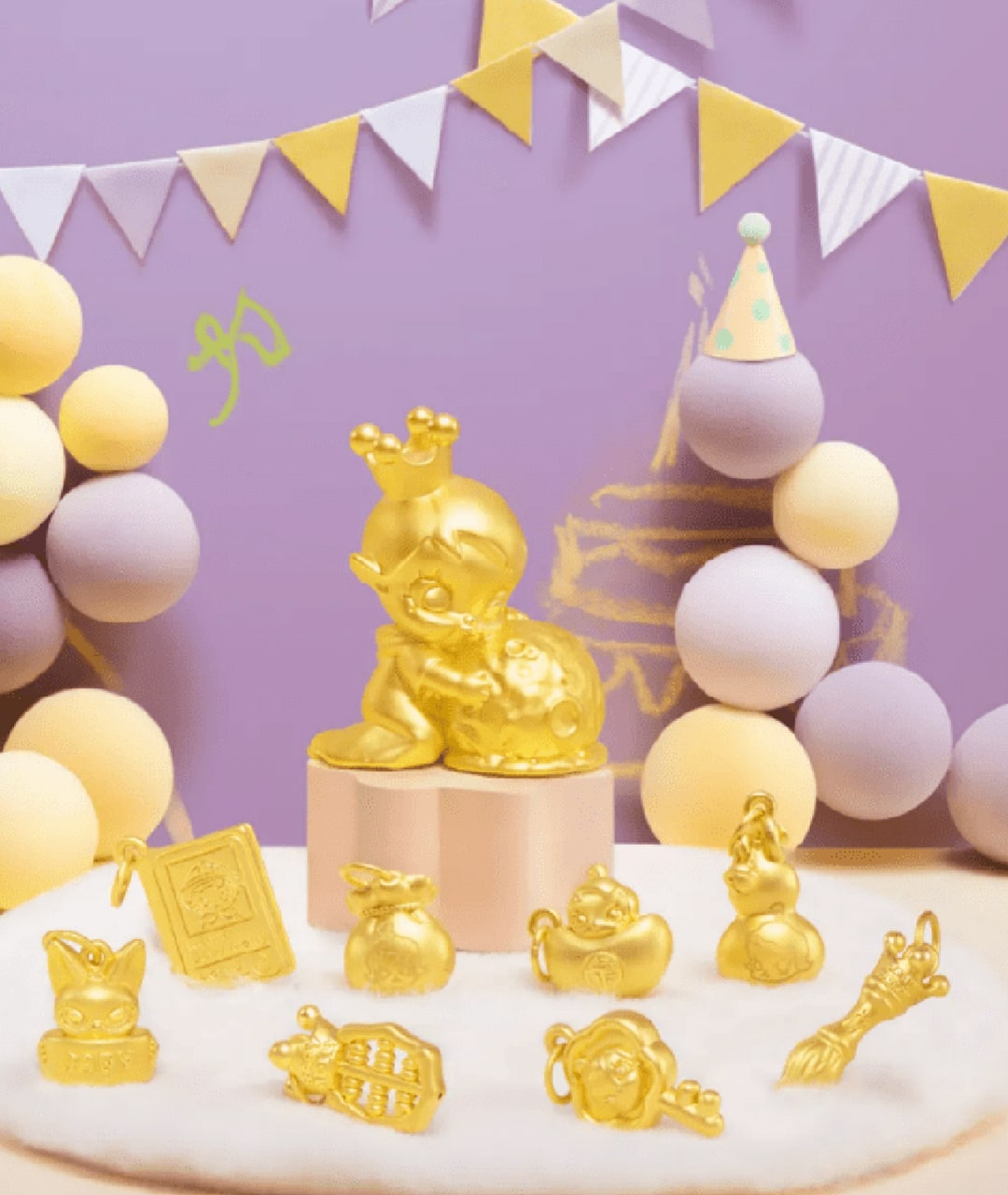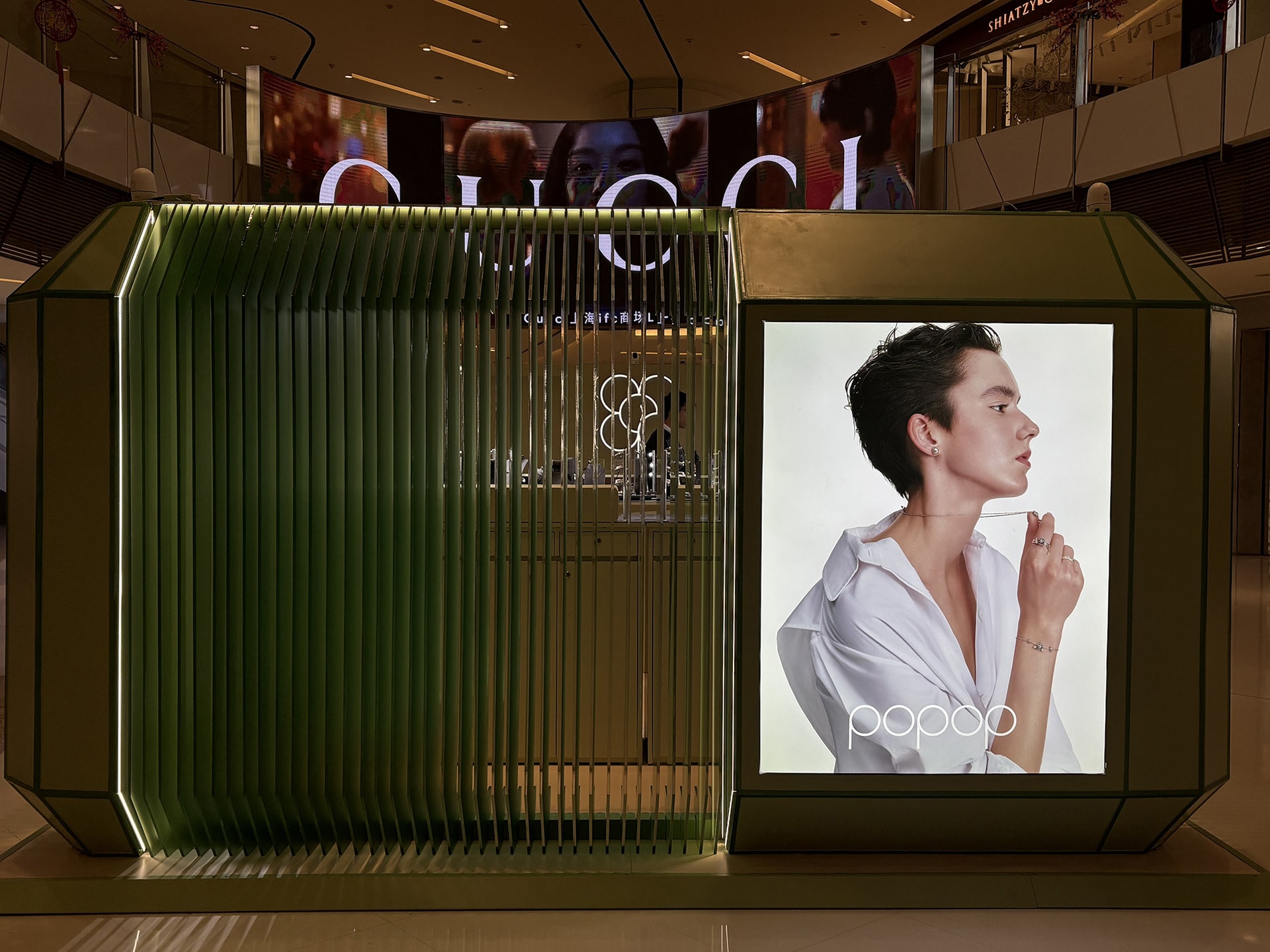During the National Day holiday, gold prices continued to climb. On October 8, the price of spot gold broke through the USD 4,000 per ounce mark for the first time, setting a historic record. Since the start of 2025, spot gold has surged more than 53%.
Financial institutions generally believe gold still has room to rise. Western Securities said the US Federal Reserve’s resumption of interest rate cuts signals a weakening of policy independence, which could further strengthen gold’s role as a reserve asset. Goldman Sachs raised its forecast for December 2026 gold prices to USD 4,900 per ounce, up from USD 4,300 previously.
Optimism has filtered down to the consumer market. On October 10, Chow Tai Fook’s posted retail price for pure gold jewelry was RMB 1,168 (USD 163.5) per gram, up RMB 39 (USD 5.5) from RMB 1,129 (USD 158.1) on October 1.
According to multiple media reports, while gold prices are being adjusted almost daily, many consumers are visiting stores to browse, but fewer are making purchases. Among major jewelry brands, Laopu Gold’s traditional handcrafted pieces, sold at flat prices, continue to see strong demand.
As gold prices rise across the board, the gap between traditional jewelry brands such as Chow Tai Fook and Chow Sang Sang and Laopu Gold’s flat-priced line has narrowed. This may partly explain why some consumers are shifting toward Laopu Gold.
According to Dushikuaibao, on October 2, during the National Day holiday, Laopu Gold opened its second standalone store at Hangzhou’s MixC mall. By 11:30 a.m. that day, customers were waiting in line for more than three hours.
However, the enthusiasm seen in Laopu Gold’s retail stores contrasts sharply with its performance in the capital market.
Data from Wind shows that upstream gold producers such as Zijin Mining, Shandong Gold, and Chifeng Gold have posted strong share price gains. But due to rising costs squeezing margins, major jewelry retailers including Chow Tai Fook, Chow Tai Sang, Tse Sui Luen, and Laopu Gold have seen only modest increases or slight declines since October.
As of market close on October 10, Laopu Gold’s share price stood at HKD 702 (USD 90.3), down 35% from its July 8 peak, erasing more than HKD 65 billion (USD 8.4 billion) in market value.
Industry observers attribute Laopu Gold’s stock slump mainly to two rounds of price hikes this year. In August, amid soaring gold prices, the company raised prices for its core products by 10–12%. Known for its premium handcrafted designs, Laopu Gold has long differentiated itself from traditional gold shops through craftsmanship. Yet consecutive price hikes have likely pushed prices beyond what many consumers are willing to pay for its brand.
Meanwhile, Pop Mart is entering the gold market, seeking to carve out a niche amid the ongoing rally.
On September 12, Pop Mart’s jewelry label Popop launched its first line of pure gold products centered on its Baby Molly character. The collection includes gold beads, pendants, bars, and collectibles. Unlike Laopu Gold, which emphasizes traditional craftsmanship, Popop leverages Baby Molly’s IP to merge gold’s collectible and store-of-value attributes. The brand also uses a flat-price model.
According to Popop’s official mini program, a Baby Molly “heart bead” weighing about 0.7 grams sells for RMB 1,380 (USD 193.2), or roughly RMB 1,971 (USD 276) per gram. A themed gold bar of about three grams is priced at RMB 4,080 (USD 571.2), or RMB 1,360 (USD 190.4) per gram. These prices rival or even exceed Laopu Gold’s average.

Public filings show Popop as a key pillar of Pop Mart’s IP-driven strategy, positioned as a jewelry brand. In June, Popop opened stores at Grand Gateway 66 in Shanghai and China World Mall in Beijing.
Before launching its own gold line, Pop Mart had collaborated with Chow Sang Sang. The intersection of gold and pop culture IP is no longer new in the jewelry sector. By combining gold jewelry with anime or pop culture imagery, brands can attract younger consumers while using flat pricing to offset cost pressures from surging gold prices.
For example, Chow Tai Fook has partnered with Black Myth and Chiikawa. CHJ Jewellery launched four authorized collections featuring Pompompurin, Hangyodon, Maltese, and Butter Bear, while Laomiao rolled out a co-branded line with Chinese animation series Heaven Official’s Blessing.
For now, Popop’s market share remains too small to challenge mainstream jewelers. Still, from an IP holder’s standpoint, Pop Mart is one of the first Chinese companies to actively integrate gold into its brand strategy and launch a standalone jewelry line.
However, gold’s inherent material limits—its hardness, color, and texture—make it difficult to evoke the same emotional connection as Pop Mart’s collectible toys. Some consumers, for instance, said certain Popop pieces fail to capture the “sparkle” in Baby Molly’s eyes.
At the same time, Pop Mart faces mounting challenges around IP protection following its move into gold.
At the company’s 2025 midyear earnings conference, chairman and CEO Wang Ning said Pop Mart has been cautious in developing its Labubu IP, emphasizing that the company has avoided overusing the character in external collaborations or product lines. Even so, counterfeit Labubu-themed jewelry and merchandise have flooded markets from Shenzhen’s Shuibei district to overseas, many featuring unauthorized designs.
As Pop Mart increased production and reduced opportunities for scalpers, secondary market prices for its Labubu soft vinyl plush line have fallen, dragging down its share price. Some industry insiders added the latest mini Labubu 4.0 series has received a lukewarm response.
Still, Pop Mart may have found a promising successor to Labubu in Twinkle Twinkle, a character that has resonated strongly with consumers for its bright design and cheerful colors. When Twinkle Twinkle’s “Savor the Moment” series launched on September 29, its plush keychains sold out almost immediately, reportedly fetching resale premiums of up to 15 times on the Dewu app. On Popop’s mini program, Twinkle Twinkle-themed silver jewelry is priced above standard silver pieces.
Since 2024, market expectations for both Pop Mart and Laopu Gold have been driven largely by the global appeal of their products. As the brands and IPs lose some of their luster, investors are reassessing valuations in what analysts describe as a healthy correction that could help eliminate speculative excess and support long-term growth.
Ultimately, both companies need to strengthen their brand identities to sustain high valuations and price premiums. Only by doing so can they seize new opportunities amid record gold prices and secure fresh momentum for growth. For Pop Mart, breaking into the jewelry segment and reshaping the gold market may prove as challenging as its earlier ventures into film and theme parks.
KrASIA Connection features translated and adapted content that was originally published by 36Kr. This article was written by Xie Yunzi for 36Kr.

